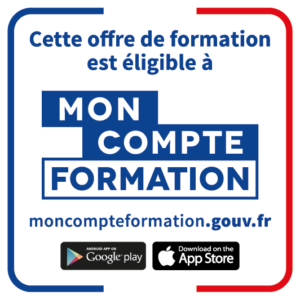

Training "The Basics of Nail Prosthetics"
Work as a Hand, Foot and Nail Beauty Center Manager by obtaining the professional qualification recognized by the State, after successfully passing tests in front of a Jury, your National Level 4 Professional Certification (Equivalent to the BAC). This training leads to the RNCP38513 certification, registered by France Compétences on 12/21/2023. 30-Day Nail Technician Training . . In order to benefit from optimal teaching, only 4 places are available per session. Book your place quickly!
Participer à la formation prothésiste ongulaire :
This training in detail

OBJECTIVES OF THIS TRAINING
- Acquire the basics to discover the profession of nail technician
- Know the anatomy of the nail and the different diseases encountered
- Know how to implement hygiene and risk prevention rules
- Master the different techniques for making false gel nails (capsules, templates, etc.)
- Know nail beautification techniques (semi-permanent varnish, extensions, nail art
- Mastering the reception of a Beauty Center
Advise and guide towards a service and/or products that meet needs and expectations - Mastering sales techniques
- Master the management and animation of a company and its staff
LEVEL REQUIRED FOR THIS TRAINING
- All audiences, no specific prerequisites, all minimum knowledge and skills are included in the training.
- Understanding of written/oral French required
AUDIENCE CONCERNED BY THIS TRAINING
- Employees in the aesthetics field wishing to specialize in nail prosthetics
- Employees in professional retraining
- Individuals starting a business
- Business manager wishing to specialize in nail prosthetics to expand his catalog of services.
DURATION OF TRAINING
30-day face-to-face training (9 a.m.-12 p.m., 1 p.m.-5 p.m.)
PLACES AVAILABLE
The number of places available per session is 4 trainees maximum.
TRAINING LOCATIONS
- Trets
- Chalon on Saone
TEACHING TEAM
- Virginie Marchand (Trets)
- Anaïs Ancey (Chalon sur Soane)
TECHNICAL AND EDUCATIONAL RESOURCES
Face-to-face training:
- Dedicated and fully equipped training room.
- Tools and products made available to learners.
- Technical file and/or educational support given to learners.
MONITORING EXECUTION AND EVALUATION OF RESULTS
- Attendance sheets.
- Oral or written questions (MCQ).
- Situations.
- Continuous assessments carried out by trainers. All acquired knowledge will be validated in full or not by a jury with regard to the certification reference framework ON THE DAY OF THE EVALUATION (3 Dates per Year, upon invitation to the exam)
Certification and validation
The training is validated by an end-of-training assessment and the issue of a certificate.
PRICE
- 4870 € Not subject to VAT

Formation prothésiste ongulaire prise en charge CPF :
